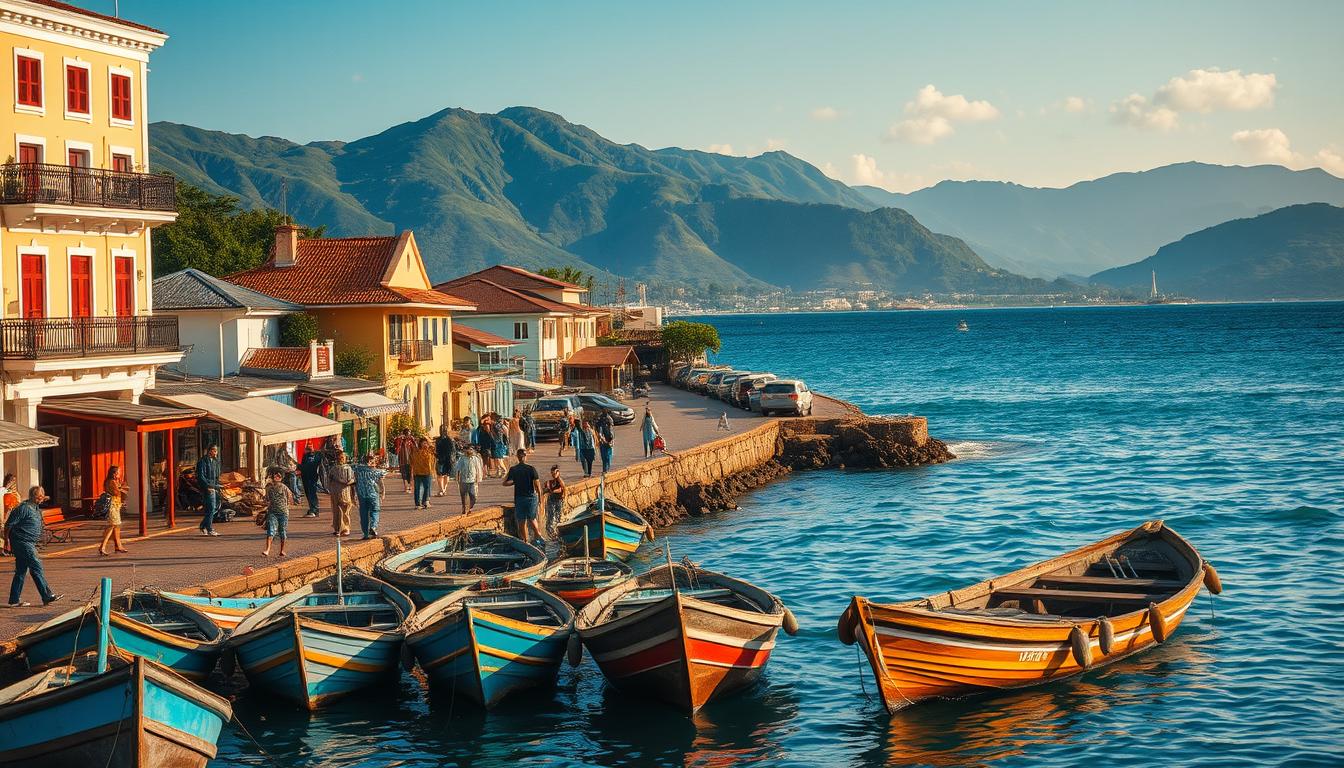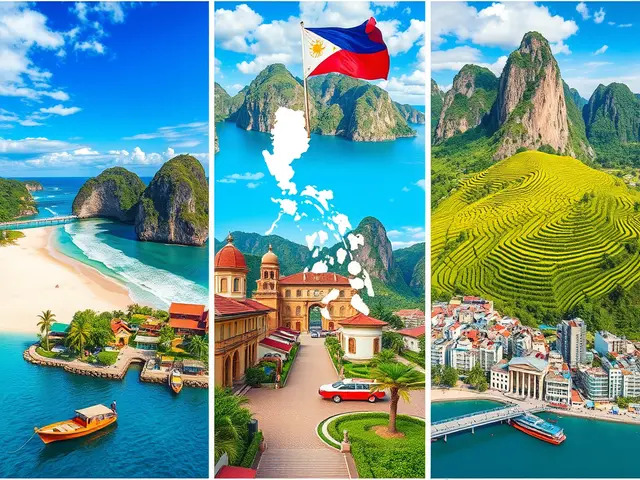Is Cavite a Good Place to Live? Facts and Insights

Just south of Metro Manila lies a province blending economic momentum with suburban comfort. Known for its industrial parks and growing infrastructure, this area offers professionals and families an alternative to the capital’s relentless pace. Recent reports highlight its 6.4% annual economic growth rate, driven by manufacturing hubs and tech investments.
Residents enjoy shorter commutes to Metro Manila while benefiting from lower pollution levels and spacious neighborhoods. Over 20% of its land hosts green spaces, parks, and recreational zones—a stark contrast to the capital’s concrete sprawl. Affordable housing developments cater to middle-income earners, with options ranging from condos to single-family homes.
This region also balances modern conveniences with cultural heritage. Historical sites like Aguinaldo Shrine coexist with shopping malls and international schools. Coastal towns provide seafood-centric dining, while upland areas offer weekend hiking trails.
Key Takeaways
- Strategic proximity to Metro Manila enables easy access to urban jobs and services
- Expanding industrial sector creates diverse employment opportunities
- Improved air quality and traffic flow compared to the capital region
- Family-oriented communities with accessible schools and parks
- Mix of historical landmarks and contemporary amenities
- Upcoming infrastructure projects enhancing connectivity
Exploring Cavite’s Thriving Economy
Once dominated by rice fields and fishing villages, this province now hosts over 50 industrial zones attracting global manufacturers. Electronics giants like Samsung and Panasonic operate alongside automotive suppliers in First Cavite Industrial Estate—the region’s oldest economic hub.
Industrial Growth and Job Opportunities
Employment surged by 18% last year as factories expanded operations. Skilled workers from Metro Manila fill roles in quality control and engineering, while locals access training programs through corporate partnerships. The Economic Development Board reports 12 new foreign investments since 2023.
Impact on Local Businesses and Infrastructure
Support services thrive near industrial clusters. Family-owned restaurants now supply corporate cafeterias, and logistics firms handle cross-border shipments. Projects like Lancaster New City combine residential towers with commercial complexes, driving real estate demand. Improved highways connect production zones to Batangas Port, cutting transport costs.
Farmers transition to agro-industry, supplying ingredients to food processing companies. This economic shift creates hybrid opportunities—agricultural engineers now develop sustainable packaging for export goods.
Navigating Cavite’s Strategic Location
Positioned as a gateway between urban and provincial hubs, this region’s geographic advantages reshape daily commutes and business logistics. Its edge lies in direct access to economic centers while maintaining quieter suburban living.
Metro Manila Connectivity Redefined
Workers reach Makati’s business district in 45 minutes via CAVITEX—a toll road linking industrial zones to the capital. The Muntinlupa-Cavite Expressway (MCX) further streamlines southbound travel, cutting Laguna-bound trips by 30% during peak hours. Over 20 bus routes now connect residential areas to metro employment hubs.
Infrastructure Driving Growth
Ongoing Build, Build, Build projects expand regional influence. The Cavite-Laguna Expressway extension will soon reduce travel to Batangas ports, while proposed rail lines promise faster airport access. Developers prioritize sites near these routes, with commercial lots appreciating 12% annually since 2022.
Proximity to Batangas and Tagaytay unlocks weekend tourism potential. Families visit Tagaytay’s cool climate within 90 minutes, while entrepreneurs tap Batangas’ shipping networks. This interconnectedness positions the area as Central Luzon’s emerging crossroads.
Embracing a Cleaner Environment and Improved Lifestyle
Residents here enjoy a breath of fresh air, quite literally, as urban planning prioritizes green spaces over concrete jungles. Recent environmental studies show particulate matter levels 34% lower than Metro Manila’s average—a direct result of efficient traffic management and preserved woodlands.
Benefits of Fresh Air and Reduced Traffic
Shorter commutes translate to tangible lifestyle upgrades. Workers reclaim 7-10 weekly hours previously lost in gridlock, enabling family dinners or fitness routines. One resident notes, “Leaving work at 5 PM actually means being home by 5:30 now.”
Neighborhoods maintain noise levels below 55 decibels during peak hours—quieter than most library environments. This tranquility stems from:
- Wider roads preventing bottleneck congestion
- Pedestrian-friendly zones reducing honking
- Strict commercial vehicle curfews
Local parks like Molino Greenspace demonstrate balanced development. These 50-acre lungs filter pollutants while providing jogging trails and playgrounds. Health surveys reveal 22% fewer respiratory issues compared to capital-region counterparts.
Evening markets thrive without smog interference, as electric tricycles replace diesel models. This shift preserves street food culture while eliminating exhaust fumes—proving environmental progress needsn’t erase tradition.
is cavite a good place to live: Pros and Cons

This growing province presents compelling opportunities for property seekers and financial backers alike. Affordable house and lot packages dominate the market, with developers offering extended payment plans spanning 5-10 years. Recent projects near Carmona and Silang provide modern amenities at 40% lower costs than comparable Metro Manila units.
Advantages for Homeowners and Investors
Three key factors drive residential demand:
- Strategic locations near industrial parks ensure rental income potential
- Flexible ownership options including rent-to-own schemes
- 20% annual appreciation rates in master-planned communities
Investors benefit from commercial developments like Pala-Pala Market Square, where foot traffic increased 65% since 2022. “We’ve doubled our retail tenants in two years,” notes a local property manager.
Considerations and Potential Drawbacks
Growth brings challenges. Some areas still experience:
- Intermittent water supply during peak summer months
- Road widening projects causing temporary access issues
- Varying enforcement of zoning regulations between municipalities
Prospective buyers should verify utility reliability and check municipal development blueprints. While infrastructure improves steadily, patience remains essential near emerging neighborhoods.
When evaluating options, prioritize locations with completed road networks and established schools. The province’s evolution continues balancing urban progress with community values, making thorough research the key to successful investments.
Fostering Family-Friendly Communities and Educational Opportunities
Neighborhoods designed for safety and growth define this region’s appeal. Gated subdivisions like Lancaster Estates feature 24/7 security patrols and traffic-calmed streets where children bike freely. Over 35% of residential areas include playgrounds and community centers, fostering connections among families.
Safe, Green Spaces for Growing Families
Urban planners prioritize walkability and nature access. Molino Eco Park spans 12 acres with shaded picnic areas and sports courts, while Vermosa Estate integrates cycling paths between homes and schools. These spaces reduce stress levels by 18% compared to purely urban environments, according to local health surveys.
Prestigious Universities and Career Growth
Dasmariñas earns its “university capital” title with 8 major institutions, including De La Salle University’s satellite campus. Programs align with regional industries:
| University | Key Programs | Industry Partnerships |
|---|---|---|
| DLSU-D | Engineering, IT | Samsung, HP Inc. |
| Emilio Aguinaldo College | Healthcare, Business | Asian Hospital, Ayala Land |
| PNC Cavite | Industrial Design | First Cavite Industrial Estate |
Graduates secure local jobs in tech parks and hospitals, with 72% remaining in the province post-graduation. Young professionals balance career advancement with affordable living—studio apartments near universities cost 60% less than Manila equivalents.
Diverse Real Estate Opportunities in Cavite
Property seekers discover a spectrum of living solutions in this evolving region. Housing options range from ₱1.2 million starter homes to ₱25 million luxury estates, reflecting varied buyer needs. Developers like Camella dominate the market, launching 12 new projects last year focused on accessibility and modern design.
Affordable Housing Meets Upscale Developments
Budget-conscious buyers find value in house and lot packages starting at ₱8,000 monthly. Camella’s East Meridian community offers 60 sqm lots with ready-to-build plans near schools and transit hubs. Meanwhile, Vermosa Estate attracts upscale buyers with smart homes featuring solar panels and private pools.
Master-Planned Townships and Modern Communities
Integrated townships redefine suburban living. Lancaster New City spans 1,200 hectares with:
- Retail complexes beside cycling trails
- Mixed-use zones combining offices and residences
- Dedicated shuttle services to Metro Manila
Foreign investors poured ₱18 billion into these developments last quarter. A local broker notes, “Demand tripled for properties near upcoming LRT stations—buyers want future-proof investments.” This growth underscores how varied real estate options fuel regional progress while meeting lifestyle demands.
Savoring Local Culture, Cuisine, and Leisure
Beyond bustling economic zones and modern developments lies a world where heritage flavors meet scenic escapes. This area’s cultural richness shines through its thriving culinary traditions and accessible leisure spots, offering residents diverse experiences beyond daily routines.
Culinary Delights and Popular Food Hubs
Food enthusiasts flock to Tagaytay’s iconic eateries like Bag of Beans, famous for its mountain-grown coffee and handmade pies. Nearby, Balay Dako serves heirloom recipes in a traditional Filipino setting, with dishes like sinigang na ribs drawing weekend crowds. Over 40% of local restaurants source ingredients from nearby farms, ensuring fresh flavors.
Communities celebrate food festivals year-round, blending Spanish-era recipes with modern twists. Must-try specialties include:
- Pancit Marilao – stir-fried noodles with seafood
- Bibingkoy – sweet rice cakes from Silang
- Fresh tawilis from Taal Lake
Weekend Getaways and Recreational Destinations
Cooler climates await just south in Tagaytay, where families picnic along Taal Volcano viewpoints. Adventurers hike Mt. Pico de Loro’s trails, while history buffs explore Aguinaldo Shrine’s revolutionary artifacts. Over 15 nature parks operate within 30km of residential hubs.
Well-planned amenities enhance leisure lifestyles. Communities feature:
- Resort-style pools and clubhouses
- Bike trails connecting to eco-parks
- Weekend markets showcasing local crafts
These cultural and recreational perks solidify the province’s reputation as a best place live for those valuing balanced lifestyles. From farm-to-table dining to mountain retreats, everyday life feels like an ongoing discovery.
Conclusion
Balancing urban convenience with provincial tranquility, this southern Luzon province emerges as a compelling choice for modern living. Strategic connectivity via the Muntinlupa-Cavite Expressway positions communities within 45 minutes of Metro Manila’s business hubs while maintaining cleaner air and quieter neighborhoods. Industrial growth fuels career opportunities across tech parks and manufacturing zones, complemented by universities producing skilled graduates.
Homebuyers discover diverse options—from ₱1.2 million starter houses to luxury estates with smart amenities. Master-planned townships integrate retail centers with green spaces, addressing both lifestyle needs and investment potential. Families benefit from 35% of residential areas featuring playgrounds and 24/7 security, alongside educational institutions linked to major corporations.
While infrastructure upgrades continue, the region’s 34% lower pollution levels and 18% shorter commutes already enhance daily life. Cultural richness shines through heritage sites and farm-fresh cuisine, offering weekend escapes without long travels.
For those seeking growth-oriented locations, this province delivers balanced living through economic momentum, environmental stewardship, and community-focused design. Evaluate priorities against evolving amenities and connectivity projects to make informed decisions about your next home.






